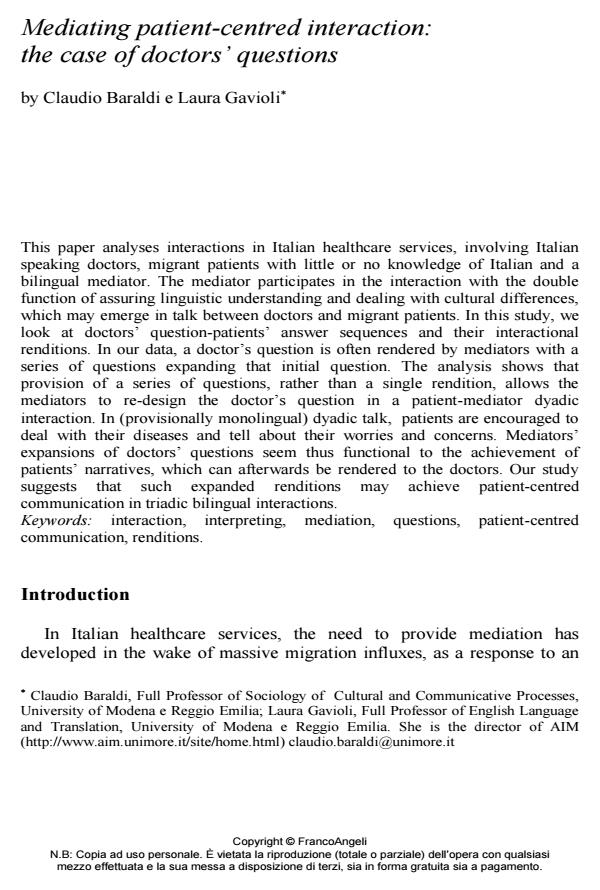Mediating patient-centred interaction: the case of doctors’ questions
Titolo Rivista SALUTE E SOCIETÀ
Autori/Curatori Claudio Baraldi, Laura Gavioli
Anno di pubblicazione 2013 Fascicolo 2013/1EN
Lingua Inglese Numero pagine 17 P. 104-120 Dimensione file 516 KB
DOI 10.3280/SES2013-001008EN
Il DOI è il codice a barre della proprietà intellettuale: per saperne di più
clicca qui
Qui sotto puoi vedere in anteprima la prima pagina di questo articolo.
Se questo articolo ti interessa, lo puoi acquistare (e scaricare in formato pdf) seguendo le facili indicazioni per acquistare il download credit. Acquista Download Credits per scaricare questo Articolo in formato PDF

FrancoAngeli è membro della Publishers International Linking Association, Inc (PILA)associazione indipendente e non profit per facilitare (attraverso i servizi tecnologici implementati da CrossRef.org) l’accesso degli studiosi ai contenuti digitali nelle pubblicazioni professionali e scientifiche
This paper analyses interactions in Italian healthcare services, involving Italian speaking doctors, migrant patients with little or no knowledge of Italian and a bilingual mediator. The mediator participates in the interaction with the double function of assuring linguistic understanding and dealing with cultural differences, which may emerge in talk between doctors and migrant patients. In this study, we look at doctors’ question-patients’ answer sequences and their interactional renditions. In our data, a doctor’s question is often rendered by mediators with a series of questions expanding that initial question. The analysis shows that provision of a series of questions, rather than a single rendition, allows the mediators to re-design the doctor’s question in a patient-mediator dyadic interaction. In (provisionally monolingual) dyadic talk, patients are encouraged to deal with their diseases and tell about their worries and concerns. Mediators’ expansions of doctors’ questions seem thus functional to the achievement of patients’ narratives, which can afterwards be rendered to the doctors. Our study suggests that such expanded renditions may achieve patient-centred communication in triadic bilingual interactions.
Parole chiave:Interaction, interpreting, mediation, questions, patient-centred communication, renditions
Claudio Baraldi, Laura Gavioli, Mediating patient-centred interaction: the case of doctors’ questions in "SALUTE E SOCIETÀ" 1EN/2013, pp 104-120, DOI: 10.3280/SES2013-001008EN